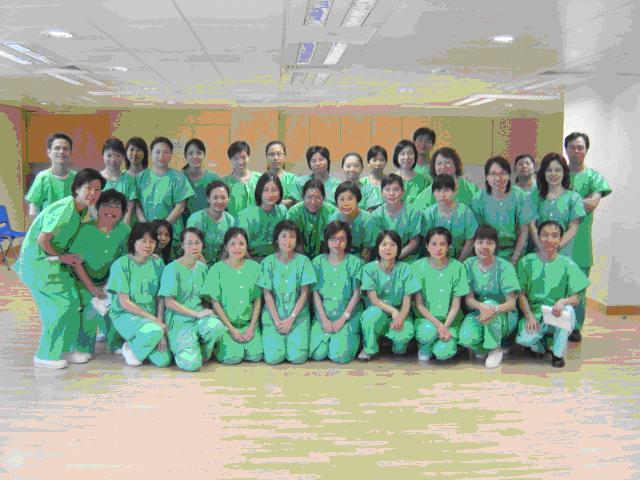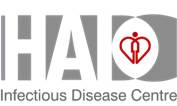|
| Our Services - ICT |
General Principles of Infection Control at IDC
The aim of Infection Control Measures is to break the chain of transmission of pathogensamong patients and between patient and staff. It is the micro-organism rather than the patients that require isolation and precaution should be directed to the route of transmission. Use of unnecessary precaution should be avoided as it may have adverse effect on the patient care.
- host
- pathogens
- environment
- vector / fomite and route of transmission
Standard precaution with strict compliance of hand hygiene should be practiced all the time and in the care of all patients. It is supplemented with transmission based precaution depending on the particular pathogens and the procedures performed on high risk patients. The precaution should be used for patients who are either known or suspected to have infectious diseases or when patient present with significant signs or symptoms.
Infection Control Practices
- Standard precautions and transmission based precautions
( PMHIC- 015 Guideline for Isolation Precautions Nov 2006 )
- Effective and timely hand hygiene for staff and visitors
- Appropriate use of personal protective equipment
( PMHIC - 031 PPE Recommendation in PMH during Serious Response Level Jul 2006 )
- Staff respiratory protection program – N95 Respirators
( PMHIC – 027 Respiratory Protection Program May 2004 )
- Sharps safety: Use needleless devices and safety items to prevent injuries
- Maintain clean environment / equipment
- Safe handling of clinical waste
- Decontamination of equipment
- Decontamination of environment
- Segregation of CLEAN and DIRTY zone
- Designated PPE gown up and gown down area
- Staff vaccination program and documentation of immunity status
Dress Code
 |
 |
 |
 |
 |
| Core Team Staff |
ID working clothes |
Doctor's Uniform |
Linen gown |
Disposable gown |
Dress code for staff working in new IDC – entering ward
Status |
Working Clothes |
Linen Gown |
Disposable Gown |
De-gown area |
|
|
|
Follow |
transmission based |
precautions and |
standard |
precautions |
|
|
|
Doctors / |
Supervisors / |
Allied Health Staff |
|
|
|
|
Yes |
if wear private |
clothes |
|
|
Follow |
transmission based |
precautions and |
standard |
precautions |
|
Ante room or |
de-gown room if |
no patient contacts |
at each floor |
|
|
Supporting staff |
when escorting |
IDC patients |
|
|
|
|
Follow |
transmission based |
precautions |
|
|
The designated |
de-gown area at |
each workplace |
i.e. ante room |
|
|
|
|
Yes |
Before repair |
procedures |
|
Ante room or |
de-gown room |
|
|
Visitors |
(i.e. Hospital |
Administrators ) |
|
|
Yes |
(on top of private |
clothes ) |
|
|
De-gown room |
or ante room |
|
|
Visitors |
( i.e. Relatives ) |
|
|
|
|
Yes |
(Anticipate patient |
contact ) |
|
|
(Updated on 02 May 2007 by ICT and HICS)
Surveillance at IDC
Target surveillance of significant hospital acquired infection
- Surgical site infection
- Catheter-related blood stream infection
- Catheter-associated urinary tract infection
- Methicillin Resistant Streptococcus Aureus (MRSA) / multiple drugs resistant organisms
- Sharps injury
Surveillance of community acquired infections that have public health epidemic and pandemic potentials
- Influenza Like Illness & Fever
- GE
- Scabies
- Notifiable diseases
- Serious and unusual infection in previous healthy patients with potential epidemiological significance and
public health hazard - FTOCC
Risk scanning and monitor
- Waste management
- Staff sickness and reporting
- Environment
- Ventilation
Intelligence gathering from various sources such as media, local and overseas health organisation, WHO and professional bodies,
Timely alert staff to impending threat and raise their vigilance
Outbreak Control & Management at IDC
An outbreak may be defined as the occurrence of infection with frequency greater than expected within the clinical settings,(usually 3 or more patients and/or staff suffering from the same infection at the same working location ; however one single case of hospital acquired legionella needs investigation) The day-to-day surveillance is important to identify cases of hospital acquired infections and other infectious diseases so that appropriate action is taken. The following targeted surveillance is recommended:
Surveillance and early recognition of cluster of ID in at-risk groups
- Fever and pneumonia surveillance
- Acute gastroenteritis
- Skin and soft tissue infection
- Staff early sickness alerting system
Control of hospital acquired infection outbreak
- Prompt isolation and cohorting of infected cases and contacts,
- Timely notification of Infection Control Nurses (ICN) via pager system
- Hospital Outbreak Control Team convened
- Confirmation of outbreak, establish case definition ,study epi-curve, mobilize appropriate resource for infection control measures and surveillance
- Reinforce infection control compliance, cleaning and disinfection of equipment andenvironment, contact
tracing, immunization and chemoprophylaxis where appropriate
- Control of patient movement + / - staff
- Visitor control and advice
- Communication to all staff concerned
- Report writing and debriefing
( Refer to PMHIC – 014 Outbreak investigation and control in HA hospitals and PMH )
Emergency Decontamination at IDC
Indication
- Immediate removal of contaminants after contamination
- Minimize the risk of infection and injury
- Diminish spread of contamination
Emergency Shower
- When staff get contamination and need immediate flush off (especially corrosive or irritant contaminant)
- Access emergency shower station (near to the rear door exit of each ward), stand under the shower and
pull the handle for flushing.
- Then go to de-gowning area for thorough cleansing and bathing immediately and change clothing.
- Report the incident to supervisor and seek medical advice
Emergency Eye Flush
- When staff get splashing to eyes
- Access emergency eye flush station (near to the rear door exit of each ward), lean forward and face down
to water outlet of the eye flush, and then activate the plug valve for flushing.
- Report the incident to supervisor and seek medical advice
Role of staff
- Fever and pneumonia surveillance
- Acute gastroenteritis
- Skin and soft tissue infection
- Staff early sickness alerting system
- All staff should know how to use the emergency shower and eye flush system with documented record at
each workplace
- Always keep the entrance free of obstacles
- A set of clean towel should be stocked at the station
- Regular function check must be performed to maintain the facilities in good function
- Post decontamination care
- Organize drills annually
Contact Tracing at IDC
Principle
- To contain and control the spread of infection
- To minimize hospital staff and patient from risk of being infected and the impact to community health.
Actions
- When staff get splashing to eyes
- Access emergency eye flush station (near to the rear door exit of each ward), lean forward and face down
to water outlet of the eye flush, and then activate the plug valve for flushing.
- Report the incident to supervisor and seek medical advice
- The work in contact tracing will be initiated and coordinated by Infection Control Team (ICT)
- To trace the source of the infection, isolate and treat those who have active infection promptly
- To provide further management to persons who are exposed to the infectious agents, such as medical
surveillance, quarantine, post-exposure chemo- or immuno-prophylaxis treatment if necessary.
- For patient who has been discharged, contact tracing will be carried out by SEB/CHP
- For in- patients, all contacts will be closely monitored by ward staff and report to ICT at daily interval and
whenever necessary
- Medical surveillance will be mandatory for all staff involved including mobile teams
- Infection control team will liaise with all the involved parties
Role of staff
- Cooperate and comply with advice of infection control team promptly
- Report immunity status if necessary
- To perform blood test or receive immunoglobulin / vaccine if necessary
- Assist in contact tracing work, such as check for patient immunity status, onset date and report
- Communicate with patient or relative.
Major Incident Control Centre (MICC) at IDC
Activation
- When there is a major infectious disease outbreak in HK and activated by HAHO for data collection,
information desertions and control management.
- When Serious Response Level (S2) or above is activated due to outbreak of avian influenza.
Management Structure
- The ID MICC is under the leadership of the Medical Director of IDC in collaboration with HO MICC.
- Upon activation, the centre will be manned by MICC in-charge, 1 Hospital Administrator and 2 clerical staff
(from GR). Depending on the scale of the outbreak, 2 additional clerks will be formed.
- All events and meeting minutes are recorded by the secretary of MICC.
Functions of ID MICC
- To coordinate with HO MICC, cluster MICCs, ICTs and various departments in data collection according to
relevant guidelines and contingency plans.
- To compile reports for senior management.
- To provide updated information related to the outbreak for preparation of press release.
- To act as a link for various departments / hospitals.
Duties and Responsibilities of staff of ID MICC
- Medical Director – overall management of the centre and budget planning during peace time.
- MICC in-charge – report to MD and act as his deputy on the overall operation of the centre, communicate
with HO / Cluster MICC when activated; and provide timely accurate information to senior management.
- Hospital Administrator – report to MICC in-charge in all matters related to the operation of the centre,
verify information and data collected from all sources, compile data collected and generate reports
- Clerical staff – assist the Hospital Administrator and MICC in-charge in the operation of the centre,
maintain all equipment in the centre, answer phone calls and receive/send information by fax / e-mails
- Secretary – keep record of all events and be responsible for minutes writing.
Operating Hours and staffing
- The period of operation depends on the scale of the outbreak.It is expected that one 8-hour shift would
meet the usual operation requirement. When a long operation period of the centre is expected, the ID
MICC will operate from 8:00 am to 8:00 pm daily.
- Staff is required to report duty within one hour after notification.
Communication
- IT systems in ID MICC include AEIS, CMS, CDARS, NDORS, eSARS, ePaed & eFLU.
- Communication lists of HO MICC members, Cluster MICCs, PMH HOCT members and ICT are stipulated.
- MICC Communication & logging system is activated via paging system and SMS for key message/alert
notification to involved members.
- The ID MICC, HO MICC and all cluster MICCs are connected with e-mail system. E-mail addresses and
fax numbers are corporate into Group fax / e-mail mechanism to expedite the process.
- PMH channel broadcast is available in IDC for message dissemination.
Video Conferencing & IP Phones
- Video-conferencing equipment has been set up and connected to HO MICC and Cluster MICCs
- IP phones are also installed to enhance communication with A&E
|
|






